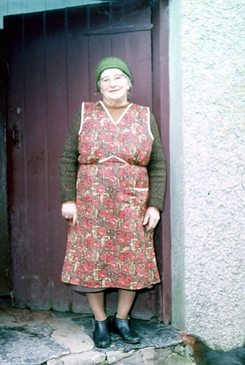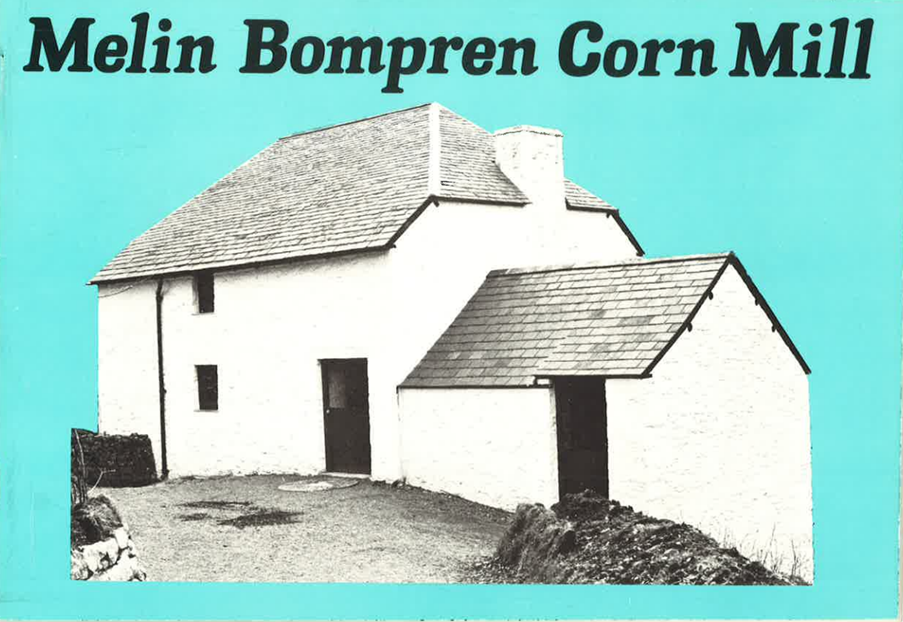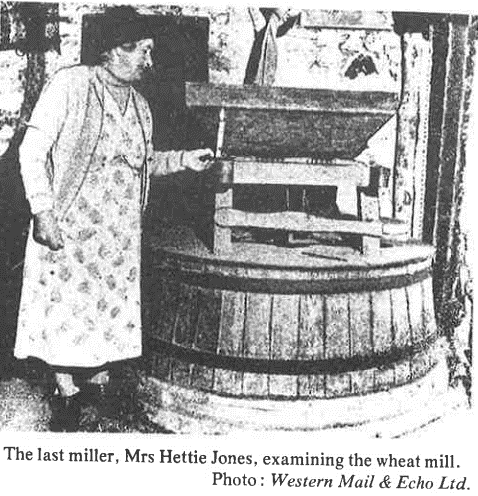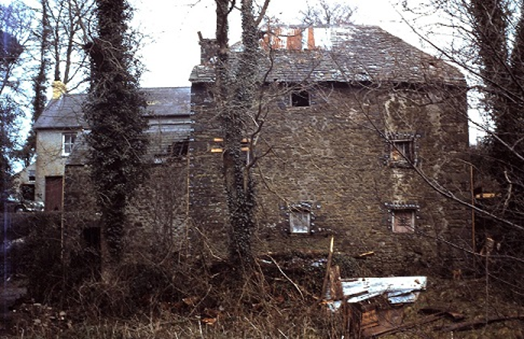The last Melin Bompren Miller

The county of Ceredigion, corresponding largely with that of Cardiganshire in Wales, is considered a centre of Welsh culture and nearly 50% of the inhabitants speak Welsh. It is largely rural with over 50 miles of coastline and has a mountainous hinterland. Given the ready availability of fast running streams, by the mid-1800s over 90 mills were at work, with the corn mill of Melin Bompren (Welsh for Wooden Bridge) being built in 1852-3 on the river Soden, at Cross Inn near New Quay.
The first miller was Benjamin Jones, who died in 1883. By 1897 Morris Jones (no relation that I have been able to discover) worked the mill, setting up as miller without any formal training, and building a new house and farm buildings in place of the old, thatched ones. He and wife Hettie had a son John who worked alongside his father until his father died in 1915. For the next 21 years, until 1936, Hettie and her son John ran the mill together. Then in 1936 John sadly died, so Hettie was left to run Melin Bompren corn mill single handed all the way until her retirement in 1957. She was obviously in no position to merely “give up’’ so she soldiered on.
The mill ground oats, wheat, and barley into flour – barley being the most important. The Welsh tended to eat more oatmeal as the climate and the poor soil in upland and mountain areas made it difficult to grow wheat. This small rural community was well served for over 100 years, from Benjamin in 1852 to Hettie well into the 1950s. In all, the mill had about 50 customers during that time. There were at least two other mills within a mile of Melin Bompren, so competition was an important consideration.

The mill had three floors; grain store at the top, middle floor where it was sifted and ground – bits of straw being sifted out at the same time – and the flour then sent down chutes to bags on the ground floor. The large waterwheel on the side of the mill drove all the machinery.

The miller’s account book for the late 1880s and 1890s has more or less survived listing all customers who paid cash. Hoverer, as was the normal practice, from Hettie’s oral testimony, by her time many customers paid by toll – a system where the farmer brings grain to be milled and the miller keeps a portion of the flour. For those who paid in cash the price might fluctuate season to season.
Since Hettie’s time the mill has not been worked as a viable business. Historically a weir and leat (an open watercourse) kept the mill supplied with water from the river Soden; there was no way of controlling the speed of the river except by throwing a gorse bush into the leat as a temporary dam. The walls of the leat were made of puddled clay and Hettie would have had many times to puddle clay with a spade and repair the leat walls. A hard life indeed. There are recordings in the Oral History Archive of St Fagans of Mrs Jones being interviewed about the mill in 1970. Unfortunately, these are in Welsh, with no English translations, as yet.
Despite obvious deterioration and the exception of the working water wheel, Melin Bompren is exactly as it was built in 1852-3, having been re-erected at St Fagans Museum in around 1970, opening to the public in 1977, with the wheel and its surrounding works placed exactly as they were in the original site. As the museum has no convenient supply of running water, the leat has had to be replaced by a modern pumping arrangement. So it can be taken as typical of a small country mill of the first half of the 19th century.

It may have surprised Hetty that in recent years the mill has been re-erected at St Fagans. What may have surprised her more is that children and older students visit the museum – a comprehensive batch of Teacher Notes being supplied to all its visitors. Hettie is gone but not forgotten!
Sources
St Fagans National Museum of History, Welsh Mills Society
Oral History Archive, St Fagans
Cardiff and Vale College
National Museum of Wales
Wikipedia